With their varying builds and features, the HTC U11 and Samsung Galaxy S8 series cater to different audiences. However, these premium smartphones pack in several of the same capable internals. Let's take a look at how their specs compare.
Note that for the sake of this comparison, we're including both the smaller Galaxy S8 and larger S8+, but apart from size, the two have much in common. In instances where the two share the same specs, only the S8 is pictured.
Size
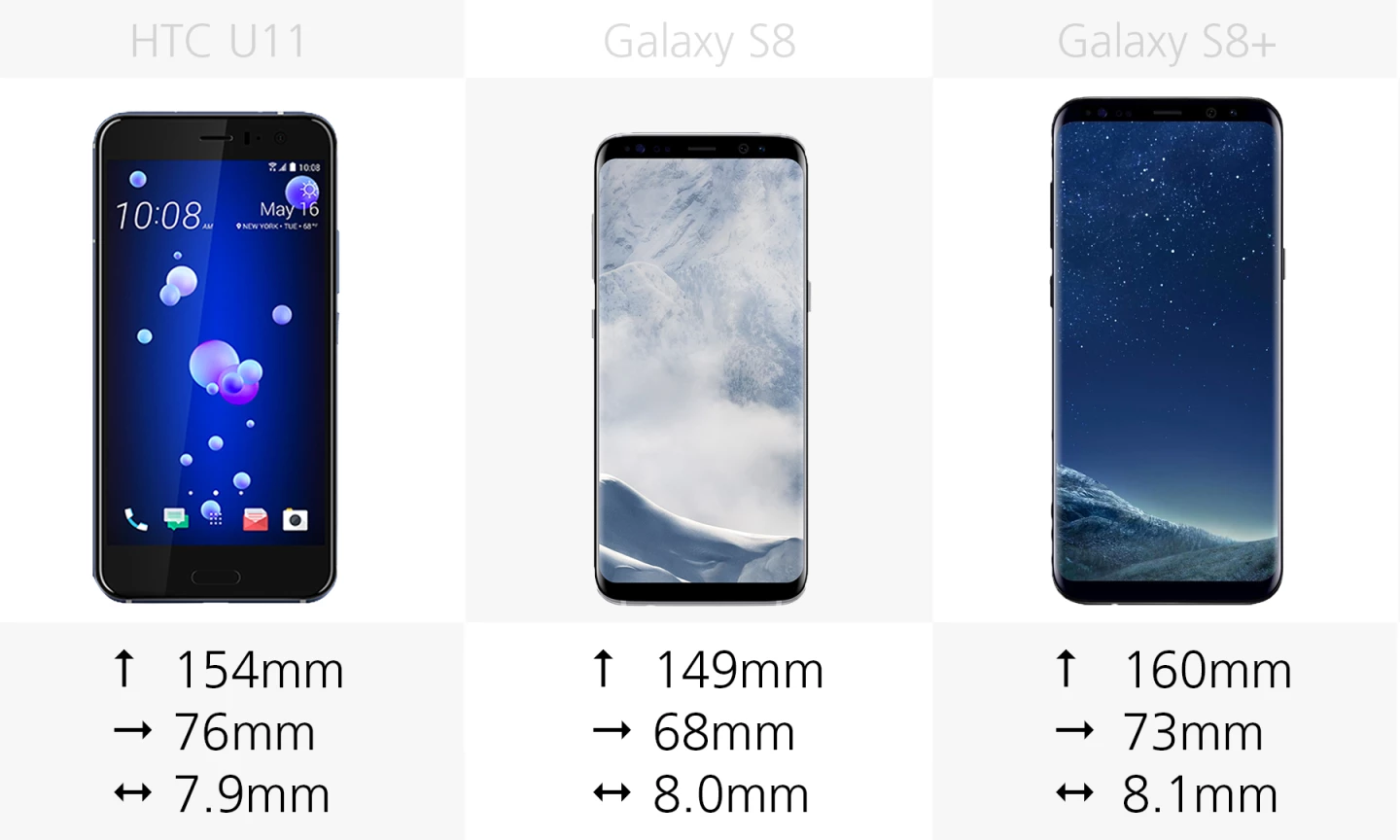
In terms of size, the HTC U11 falls somewhere between the smaller Galaxy S8 and larger S8+. Even so, it is actually the widest of the bunch: The S8 series phones are relatively tall and narrow, which helps keep them portable and easy to hold in one hand.
Weight
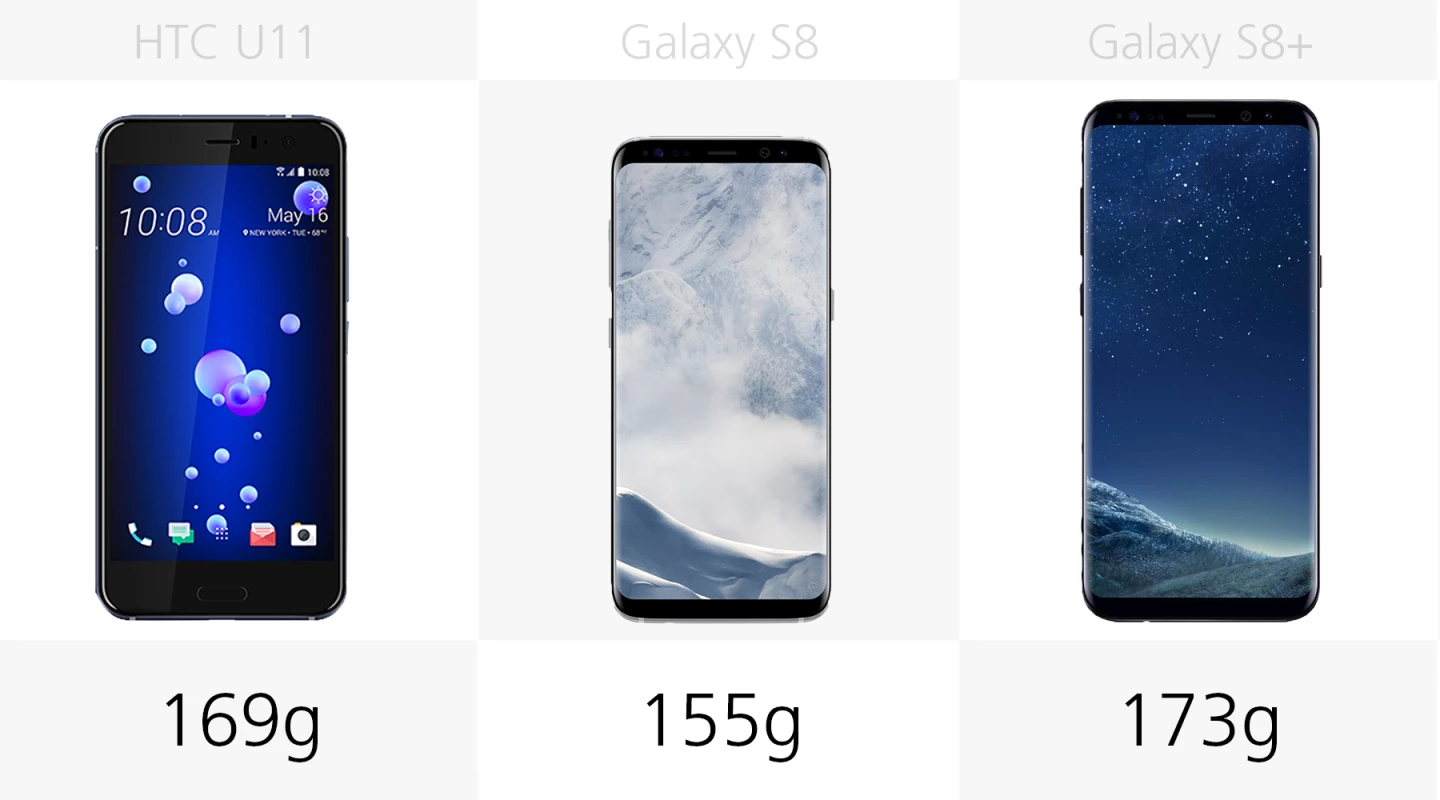
As you might expect, the HTC U11 falls in the middle weight-wise as well.
Build
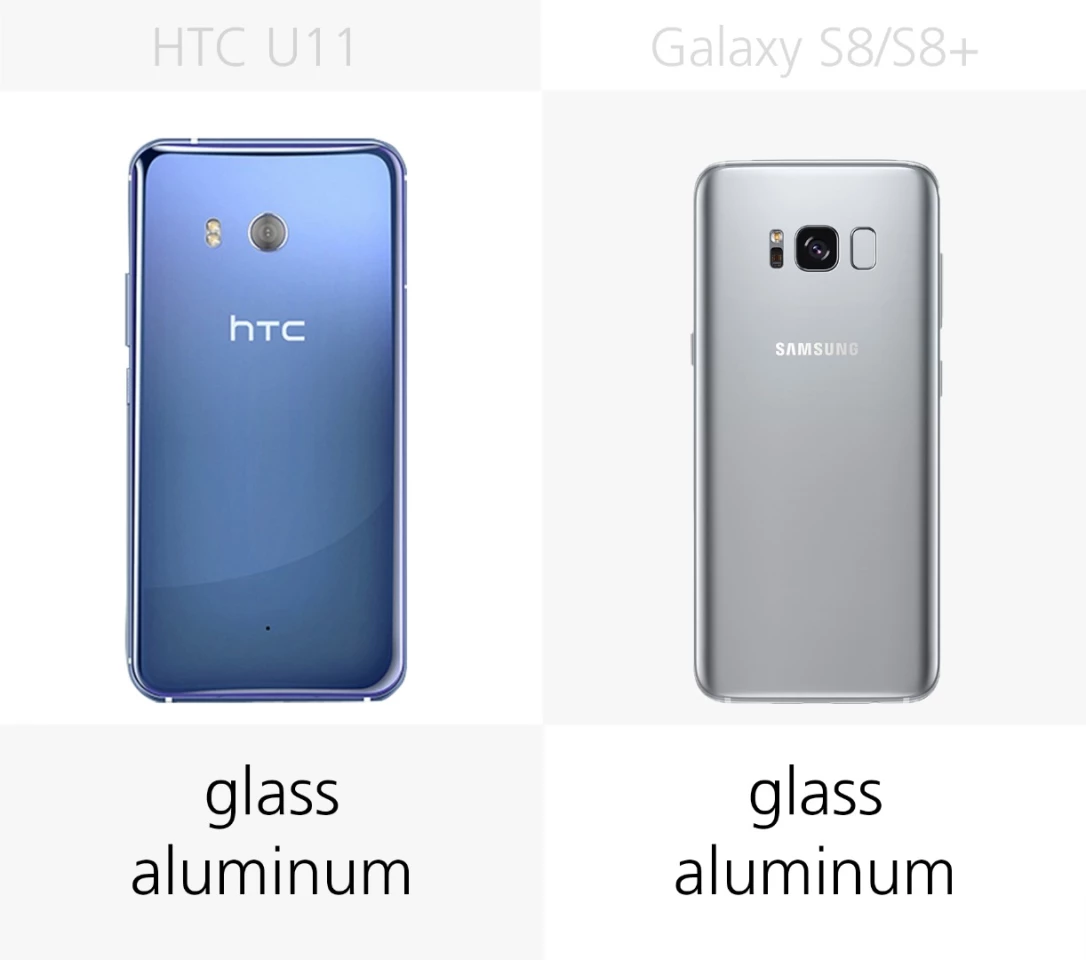
Both makers opt for a glass back and aluminum frame. On the Samsung phones, the frame is more minimal, allowing the phone to seem almost completely made of glass.
Colors

Both phones are available in a number of color variants, but availability varies by region. Here, the options marked with an asterisk are not currently available in the US.
Water resistance

The S8 and S8+ have a slightly higher water resistance rating, but all of these devices should be able to withstand a brief dip or splash.
Display size
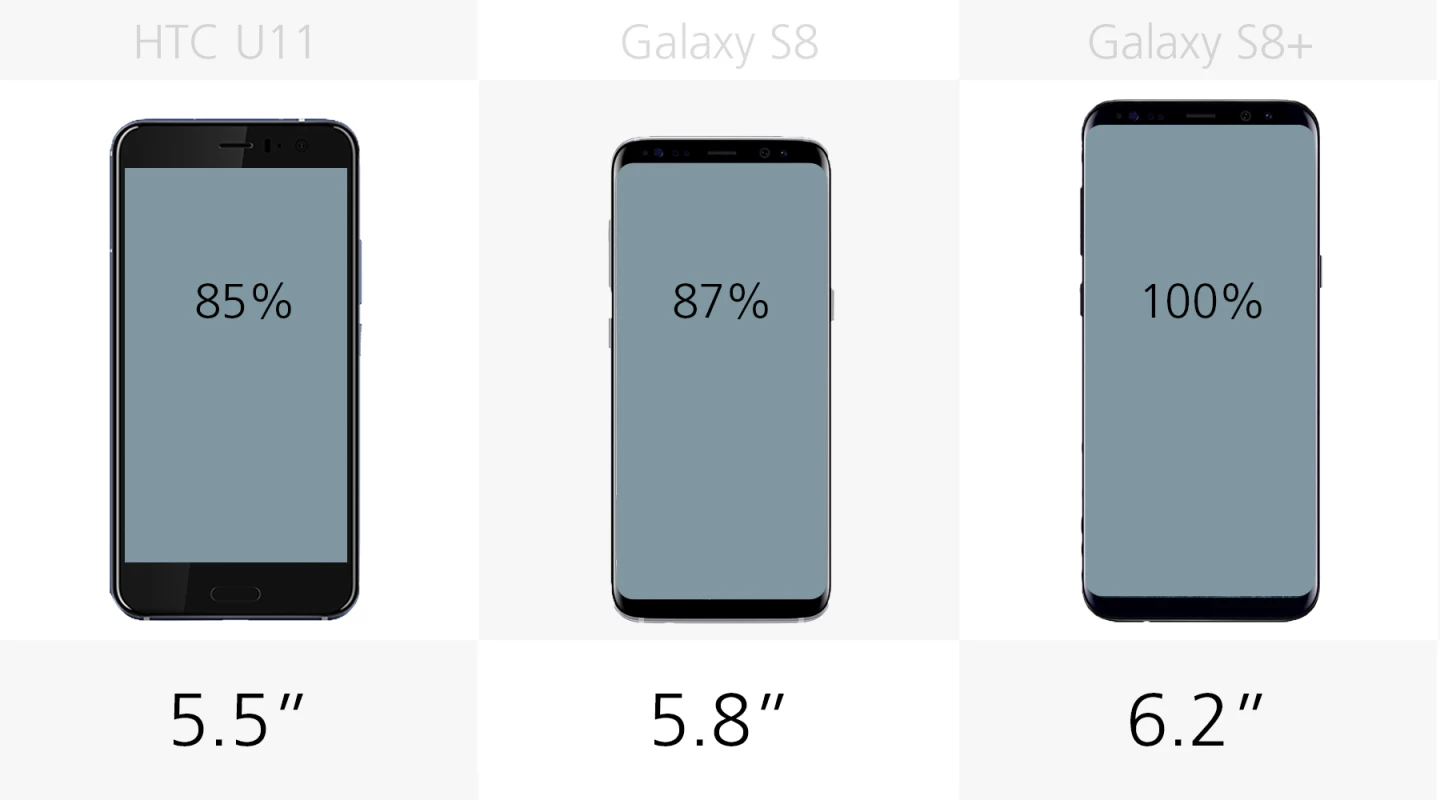
The S8 series' so-called Infinity Displays really maximize the space on the front of the phone, fitting in more screen area. The HTC U11 offers only 85-percent of the area offered by the S8+, but even the smaller S8 has slightly more screen space.
Display resolution
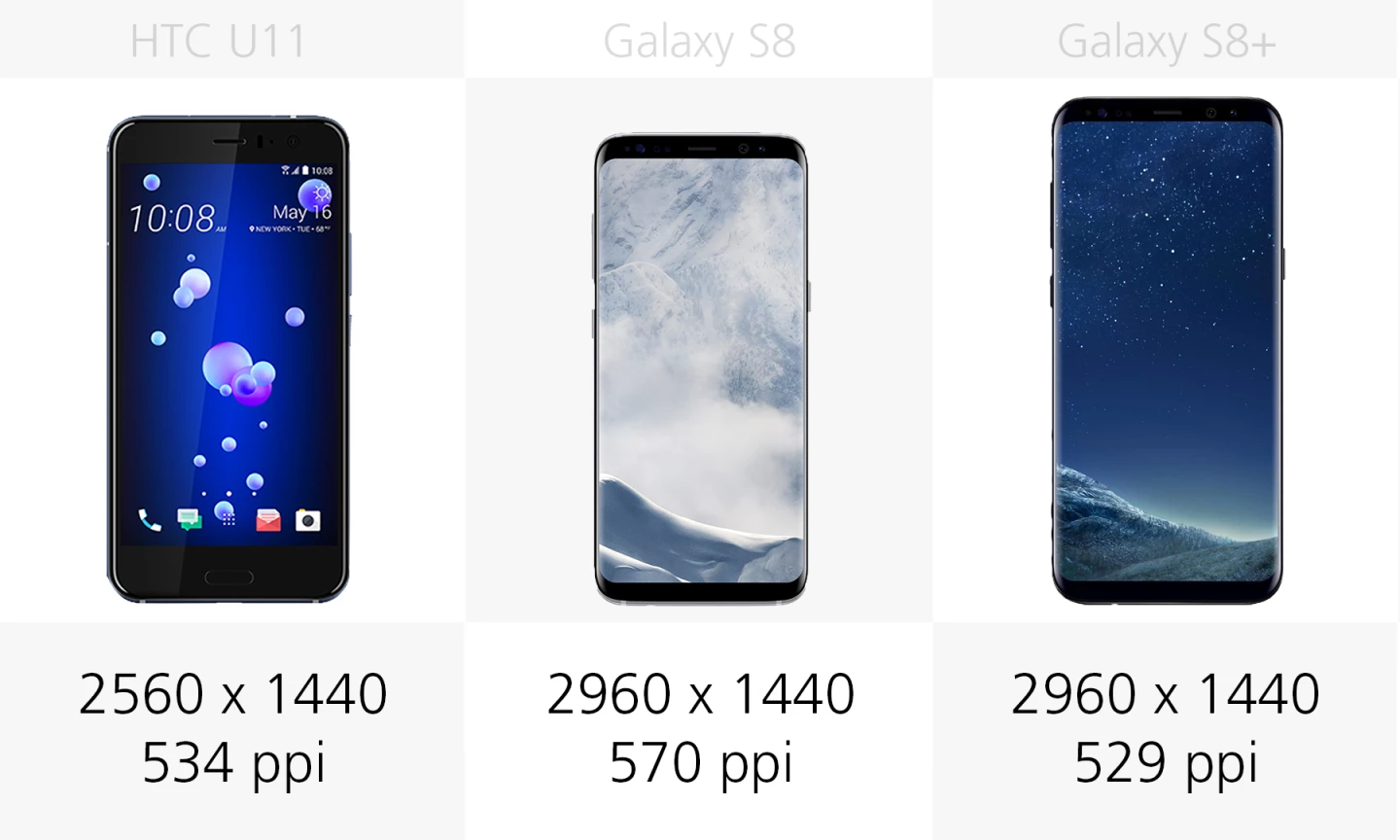
All three of these phones have high resolution QHD displays, with some of the highest pixel densities on the market.
Display type

When it comes to display technology, the two makers fall on opposite sides of the IPS/AMOLED fence.
HDR display

The display on the S8 and S8+ is certified Mobile HDR Premium by the UHD Alliance, which is one of the reasons why it has garnered praise from experts. These Samsung phones support HDR content from services like Netflix (when available).
Curved display
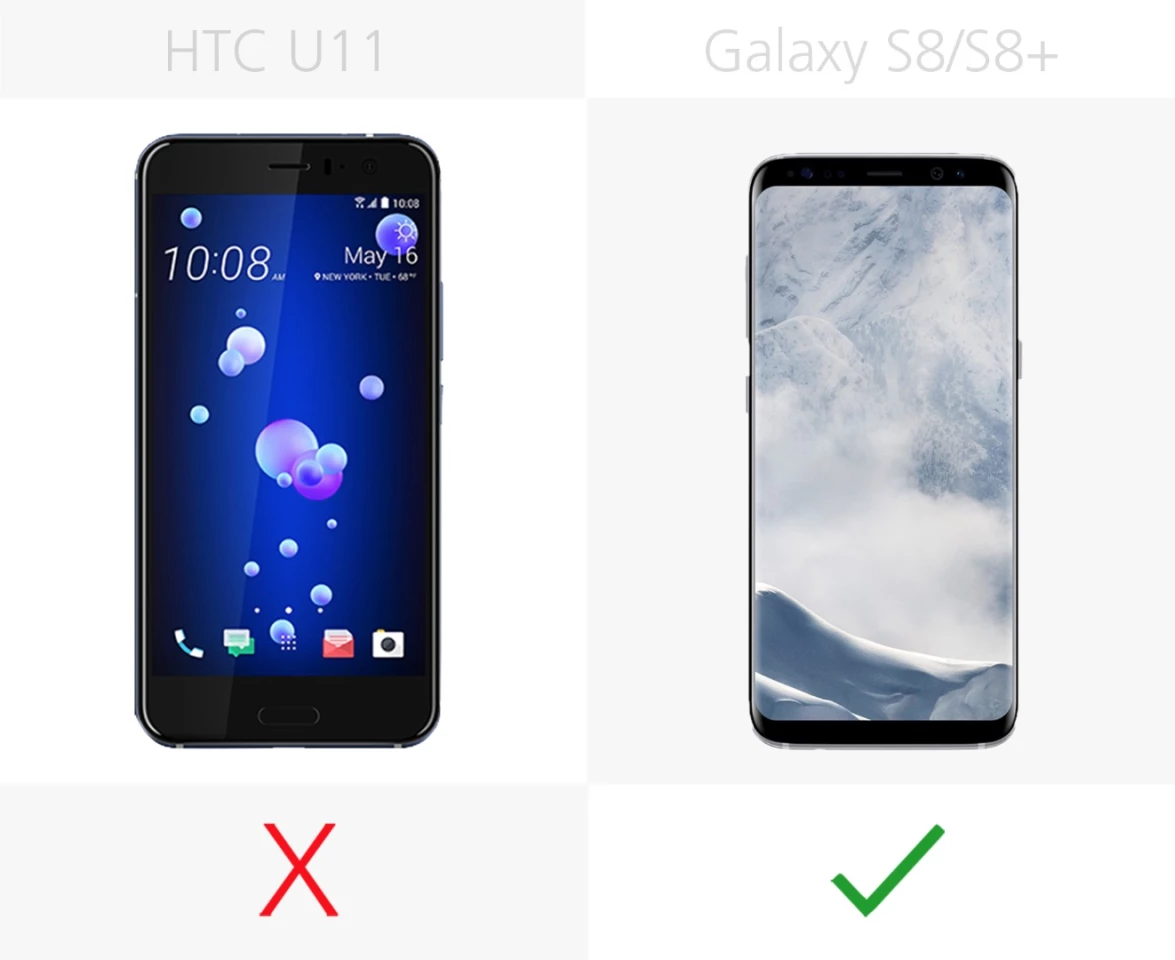
You may not be able to tell from a straight-on photo, but the S8 and S8+ have rounded edges on both the front and back. The display curves around the edges of the phone. It looks good, but it does come with increased fragility.
Pressure-sensitive edges

The HTC U11 capitalizes on the frame instead of minimizing it. The edges of the phone are pressure-sensitive, so you can perform tasks like snapping a pic or launching voice-to-text with just a squeeze. It seems like a novel way to add more touch interaction to a device, but we'll see how it plays out in practice.
Home button

The U11 has a physical home button below the display, but the slim-bezel build on the S8 series necessitates an onscreen home button.
Fingerprint sensor
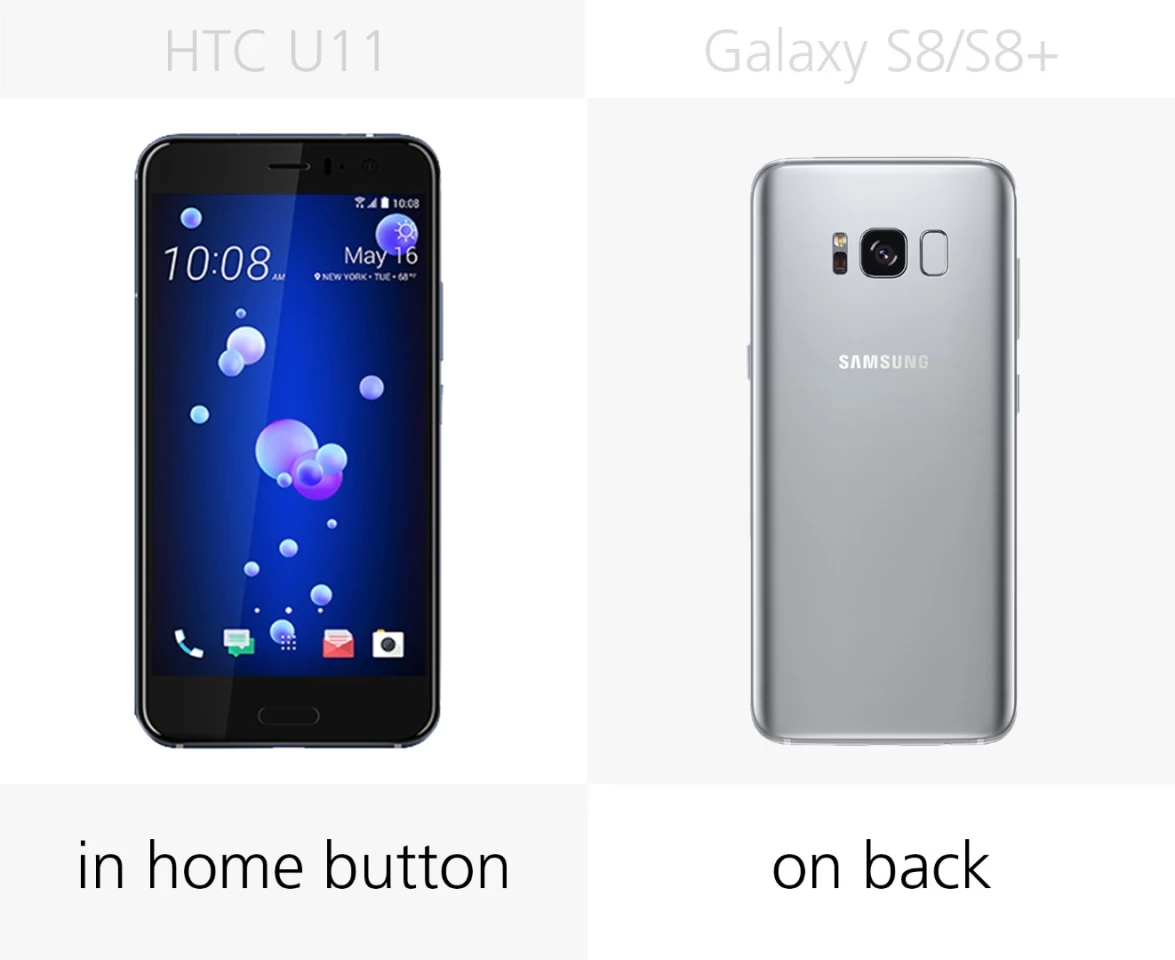
The physical home button on the U11 has an embedded fingerprint sensor. On the Galaxy S8, the sensor is on the back right.
Face recognition
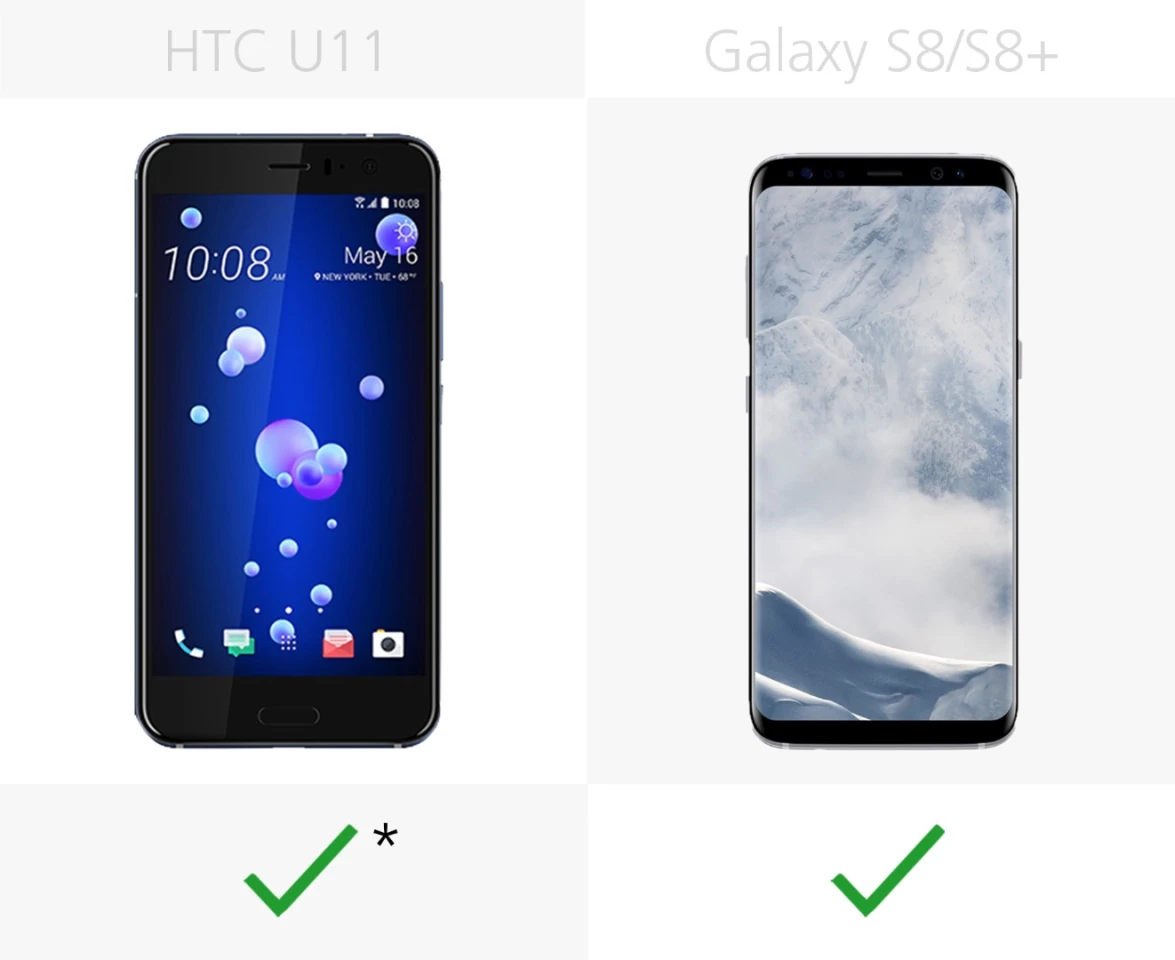
Both phones have some degree of face recognition technology for easy logins. On the HTC U11, it's in the form of the "Trusted Face" feature baked into Android. Samsung has also introduced its own separate take on face recognition in the S8 series, but it probably isn't more secure than the easy-to-trick Trusted Face feature.
Iris scanning
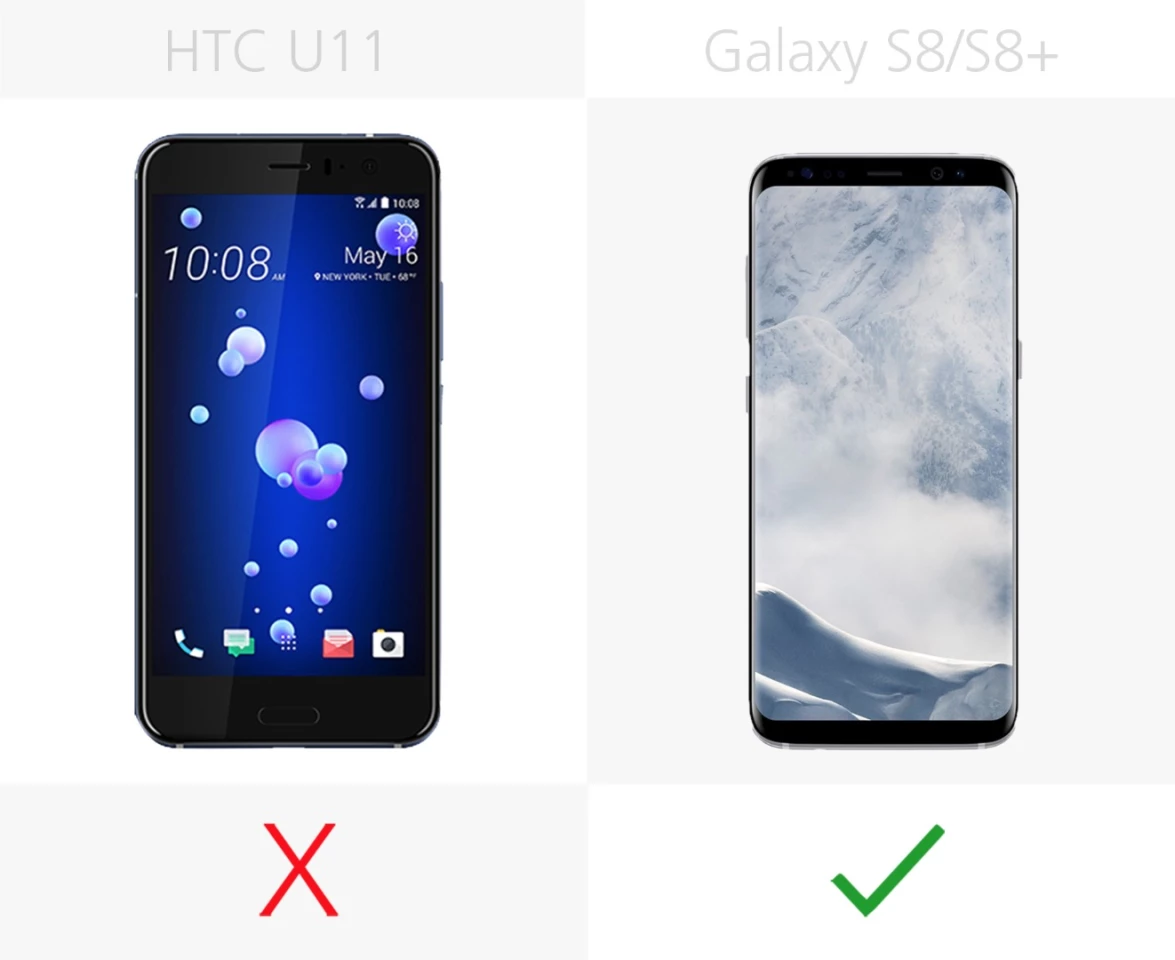
If you want an easy-to-use biometric-based log-in option, Samsung does have you covered with iris scanning. On the S8, it's much quicker and simpler to use than the first time we saw it on the ill-fated Note 7.
Processor
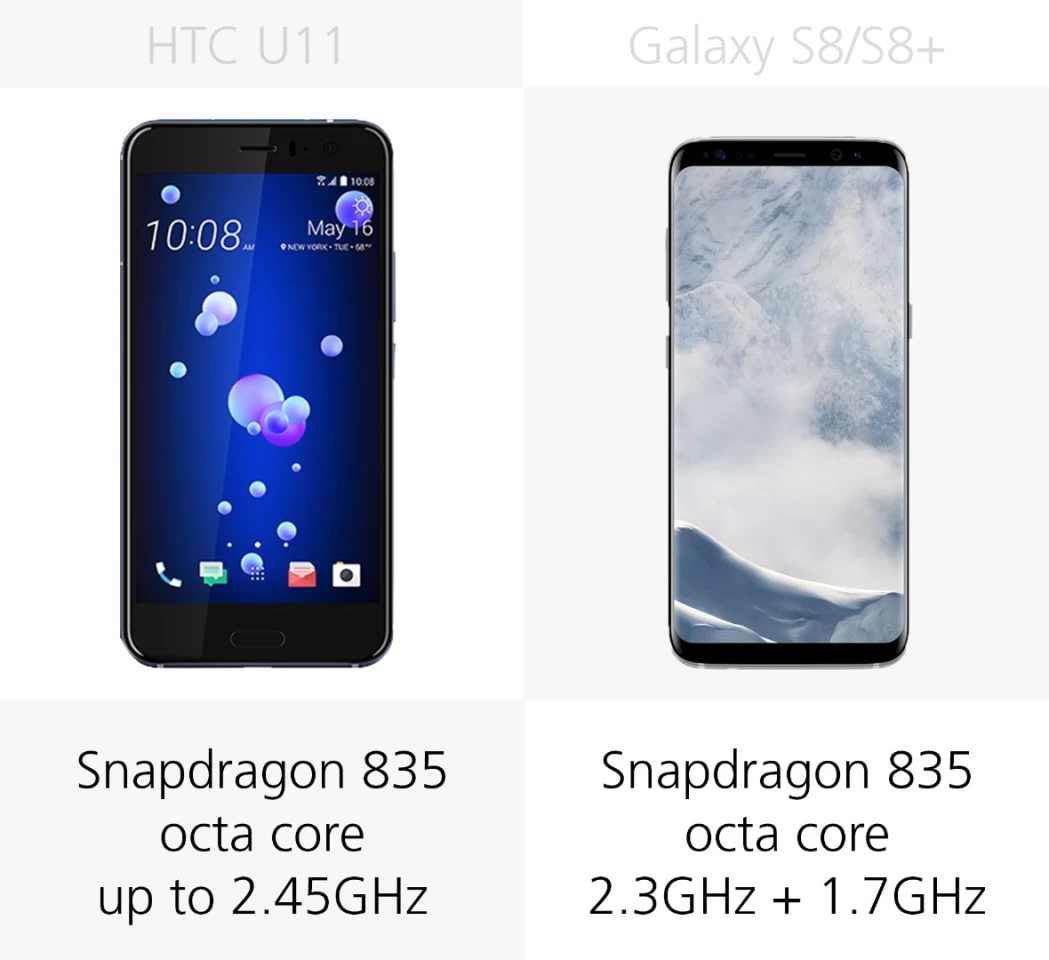
Both phones have the latest Snapdragon 835 processor in the US, though Samsung does use its own similarly capable Exynos processor in some other regions.
RAM

These phones have a matching 4 GB of memory.
Storage
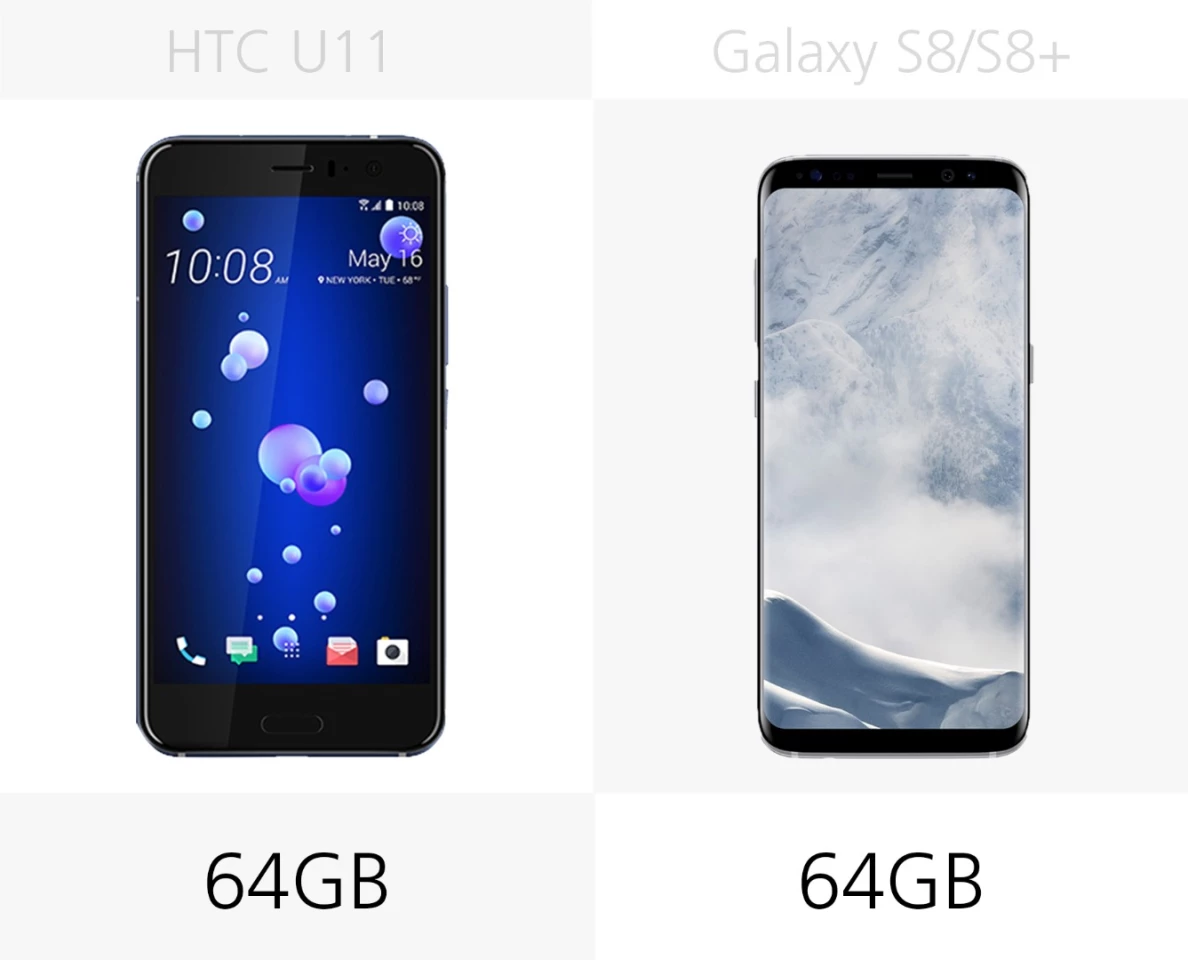
Likewise, they both offer one (fairly generous) 64 GB storage size.
MicroSD
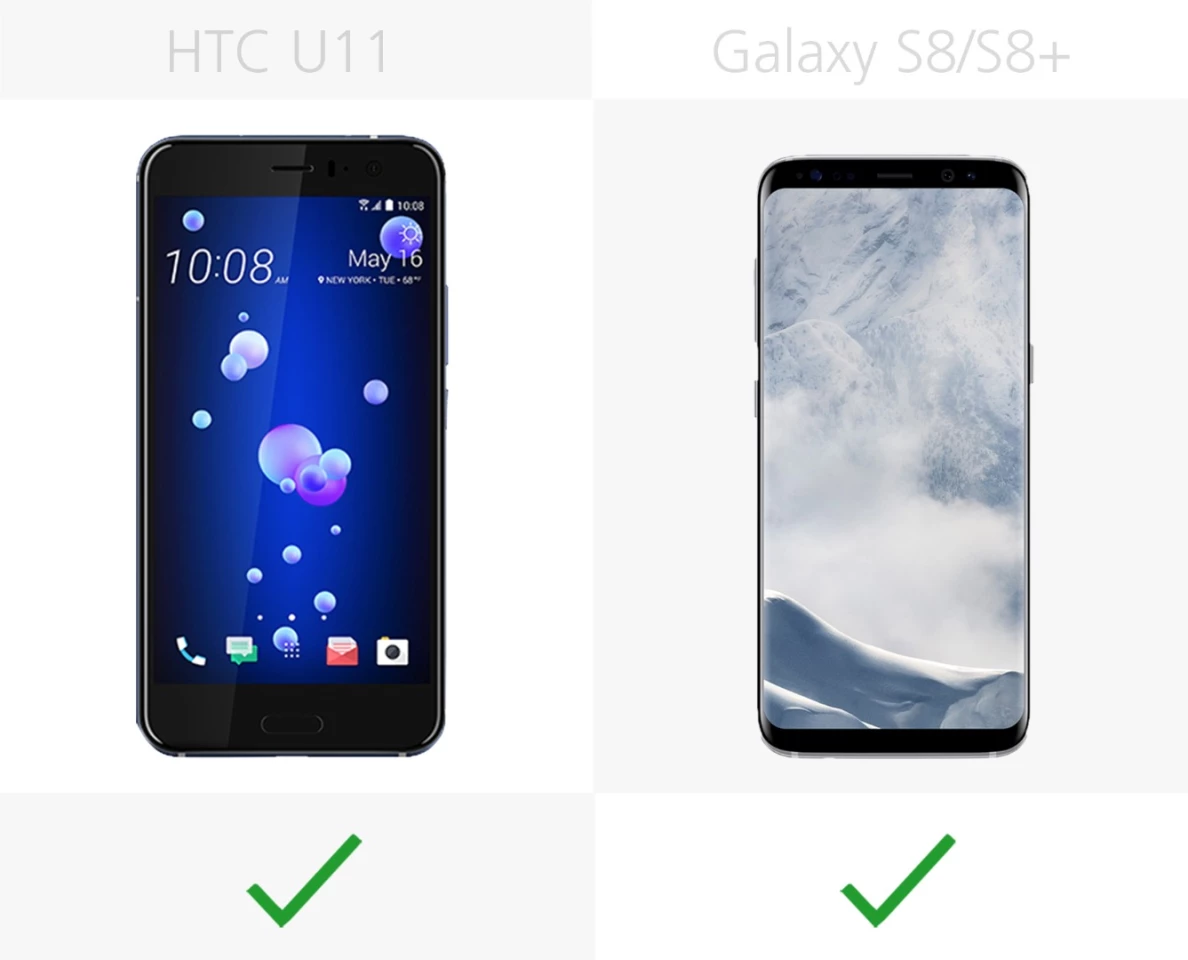
And, if storage is a real concern, either option has a microSD slot for expandable storage.
Hi-Fi audio
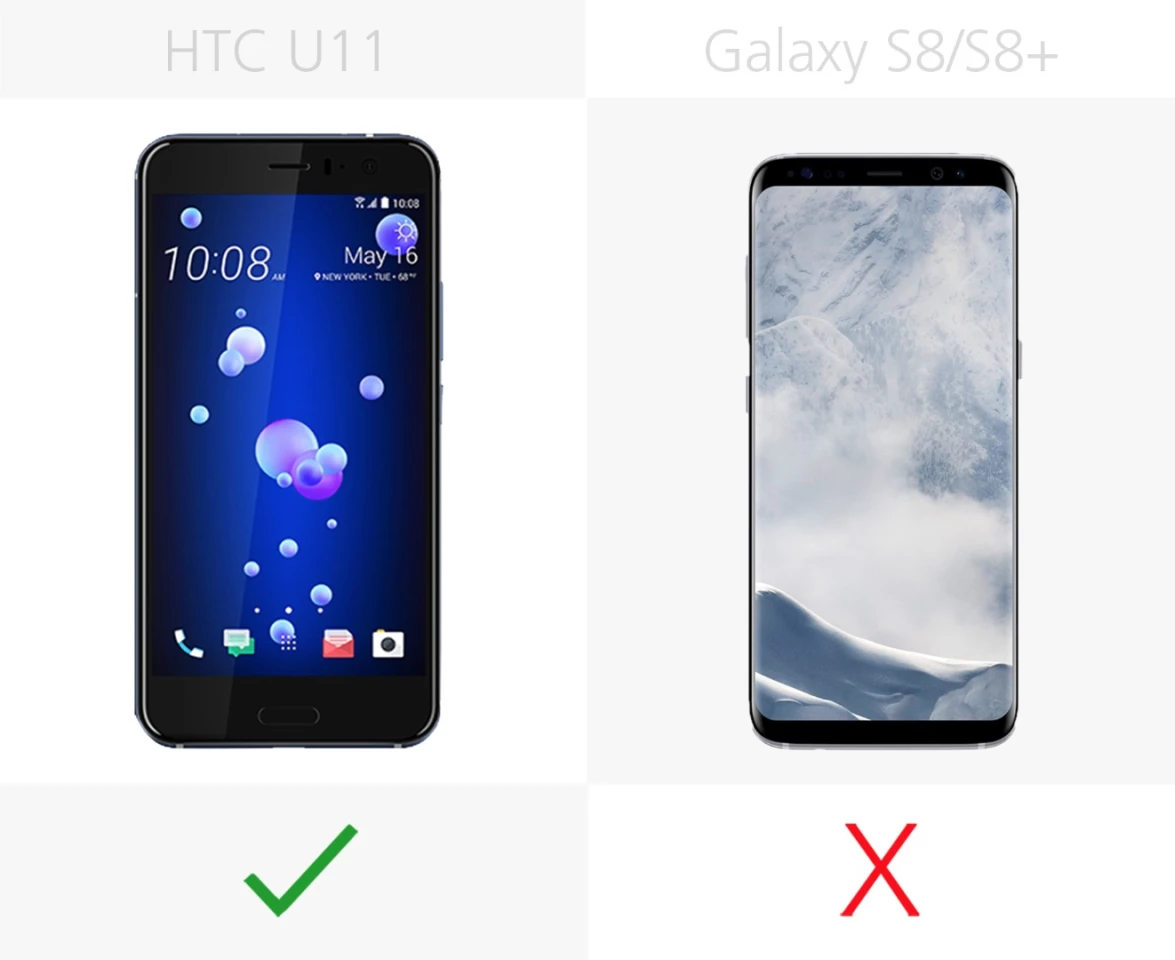
In a nod to audiophiles, the HTC U11 supports Hi-Fi audio, as long as you have the right headphones.
Headphone jack

Despite its focus on audio, HTC has followed in Apple's footsteps and axed the standard 3.5 mm headphone jack. It comes with an adapter, but otherwise you'll have to use either USB-C port headphones or a wireless pair.
Bundled headphones
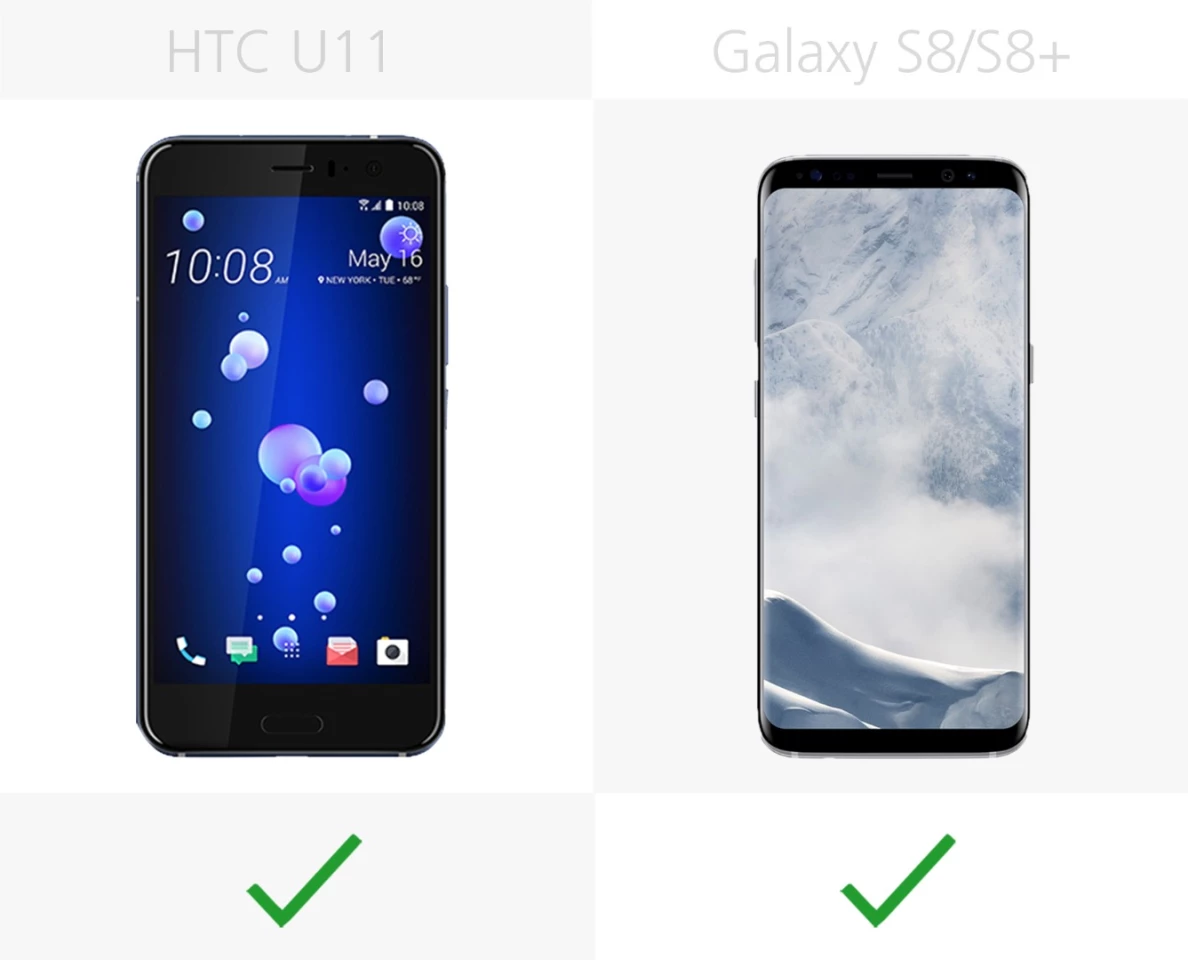
Both makers include a seemingly decent pair of earbuds in the box. HTC bundles a pair of U Sonic buds (with a USB-C port) with active noise cancellation, while Samsung includes an AKG pair.
Battery

The U11 and S8 have the same battery capacity, while the S8+ adds a little more. Still, keep in mind that battery size isn't the only indicator of overall battery life.
Fast charging

Both phones support quick charging, for when you need a burst of juice on a near-dead phone.
Wireless charging

Only the S8 series supports wireless charging (with a sold-separately charging pad). It even supports some degree of fast wireless charging.
Camera megapixels

These options have matching 12 MP resolution in the rear-facing cameras, but HTC makes the unusual move of putting a chart-topping 16 MP in the front (selfie) camera.
Camera aperture (rear)
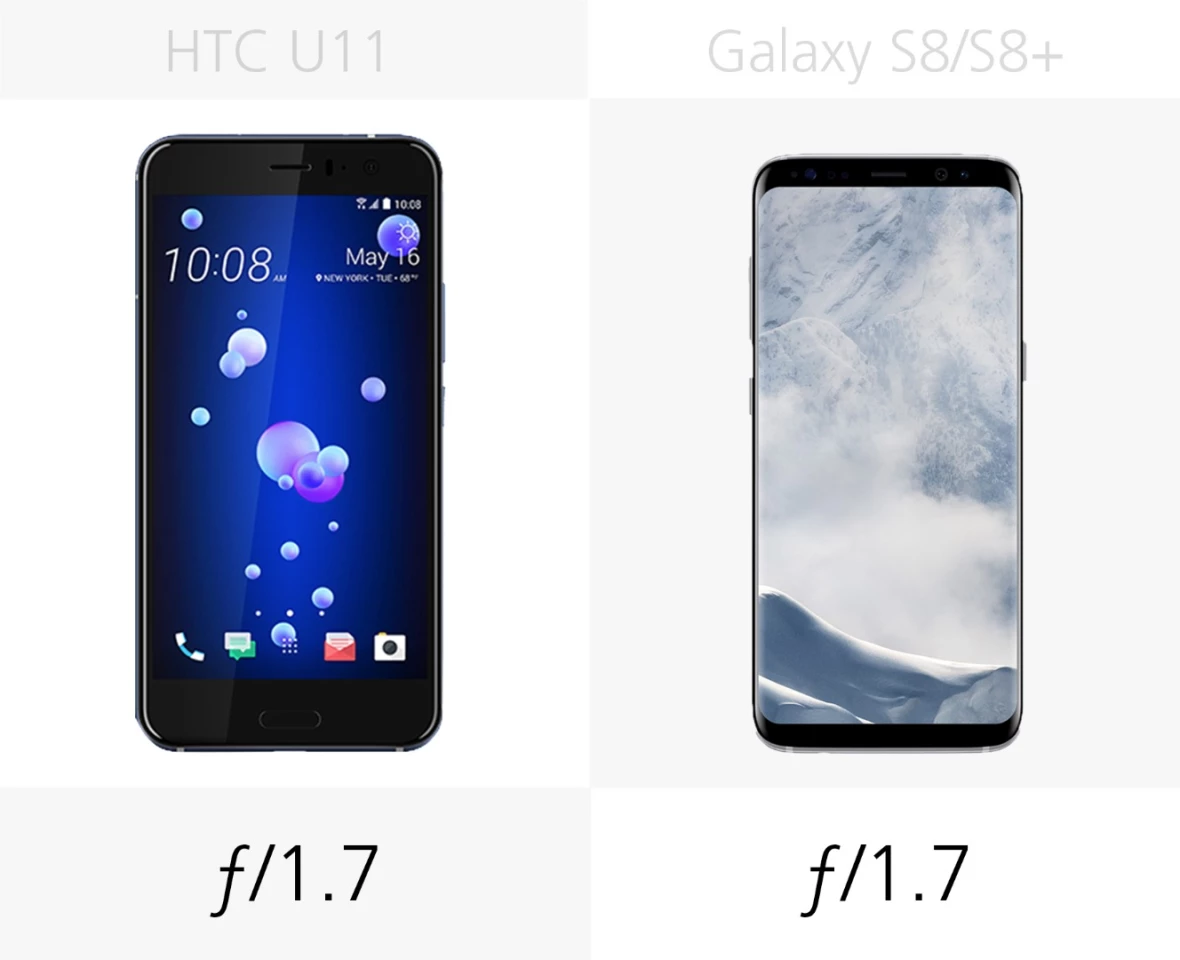
The cameras both have large f/1.7 apertures, which should mean good things for low light shooting and depth of field effects.
Dual-lens camera
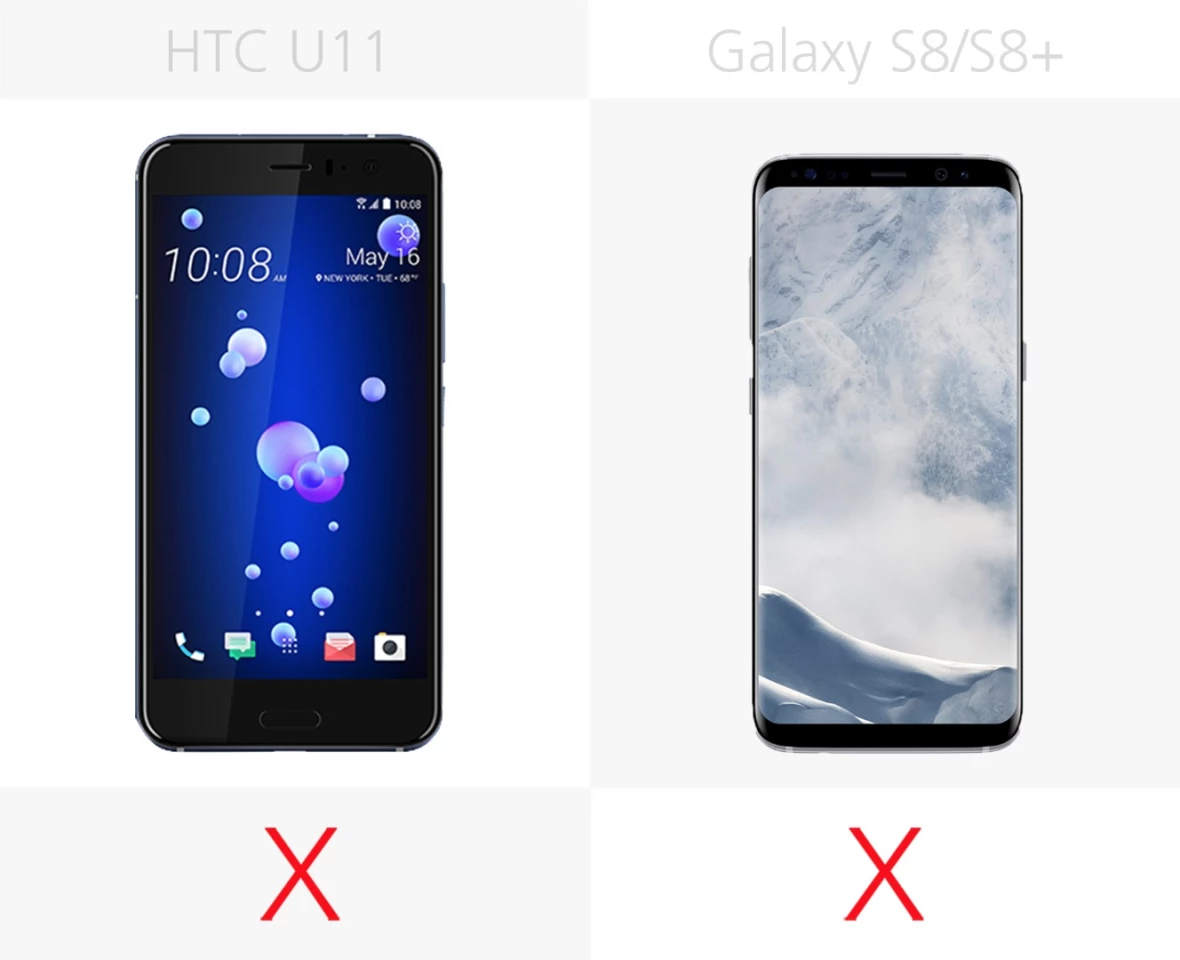
However, neither maker has opted into the dual-lens camera trend like the LG G6 or iPhone 7 Plus.
Optical image stabilization (OIS)

Both cameras do include OIS, which minimizes image blur by counteracting hand shake.
Mobile payments
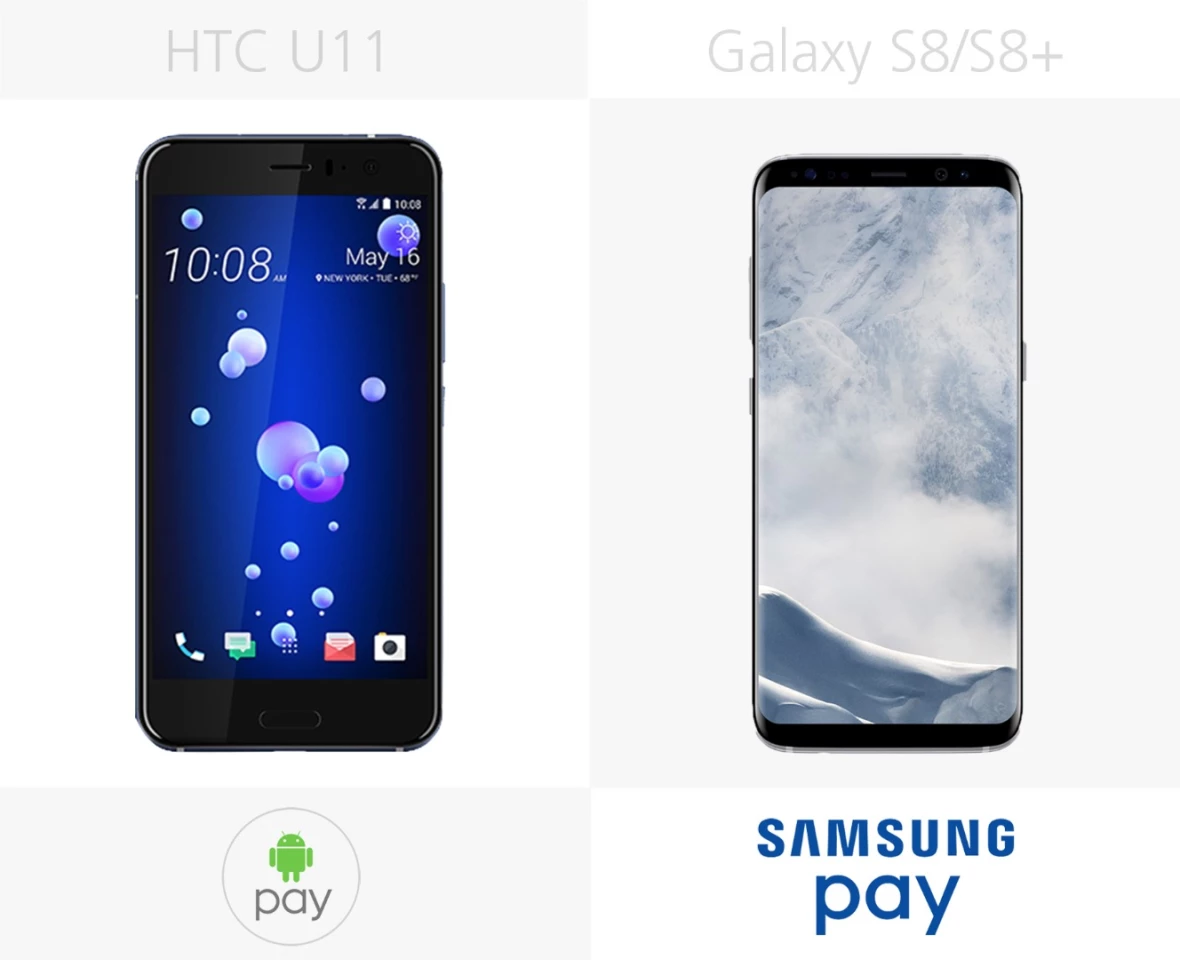
These phones include NFC technology, which allows you to make payments at brick-and-mortar retailers with a swipe of your phone. The S8 and S8+'s Samsung Pay should be a more convenient option for US customers, since it can be used for both NFC and magnetic strip transactions.
Voice assistant

Both phones have Google Assistant (like all recent Androids), but that's not all. Both makers also included their own proprietary voice assistant, and the HTC U11 is the first phone to have built-in wake word access to Amazon Alexa.
Mobile VR headset
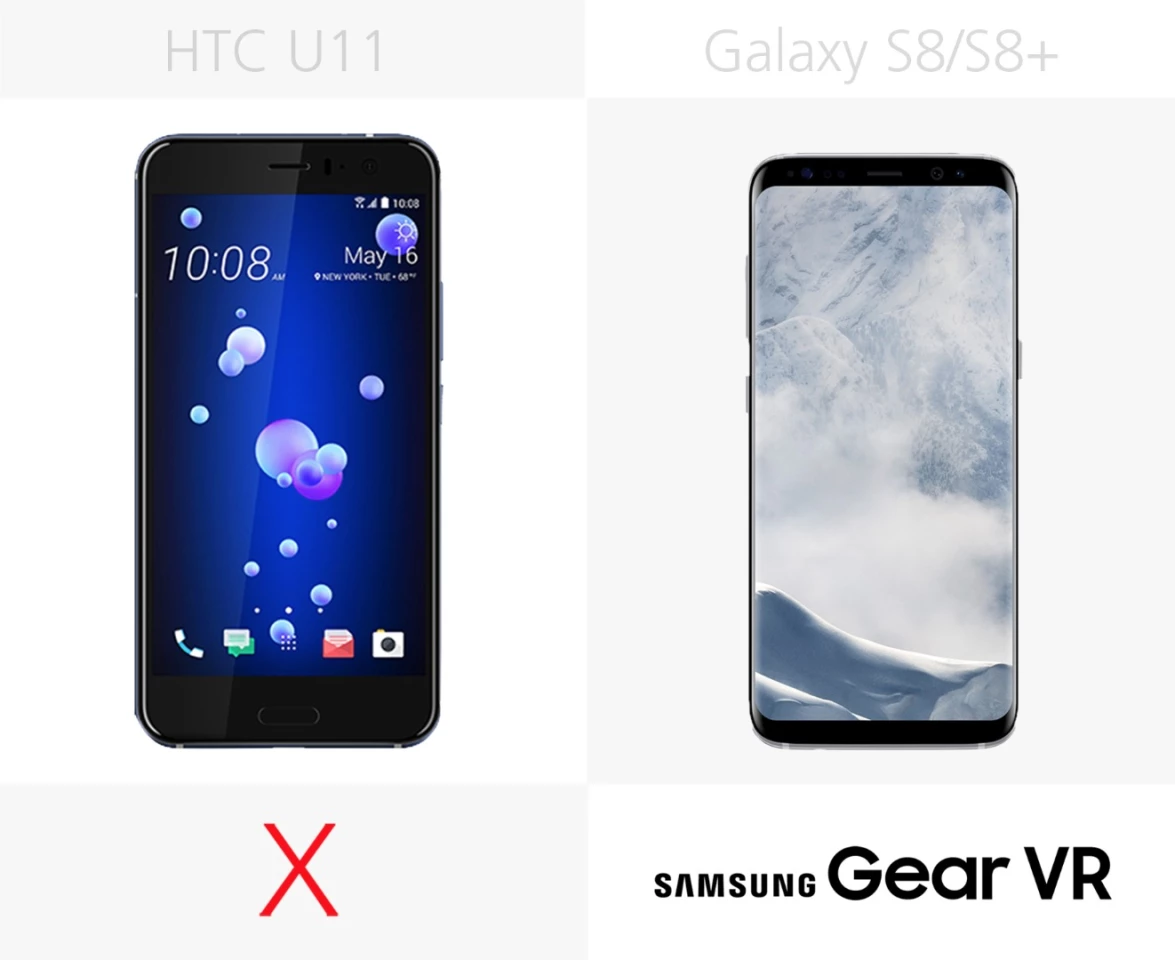
If mobile virtual reality is a priority, the S8 or S8+ are your only options here. They're compatible with the Samsung Gear VR headset. The HTC U11 does not support any meaningful mobile VR experiences beyond basic Google Cardboard functionality.
Desktop PC dock

The S8 series phones are compatible with Samsung's DeX dock (sold separately) which lets you power a PC-like desktop computing experience using your phone with a monitor, keyboard and mouse.
Operating system
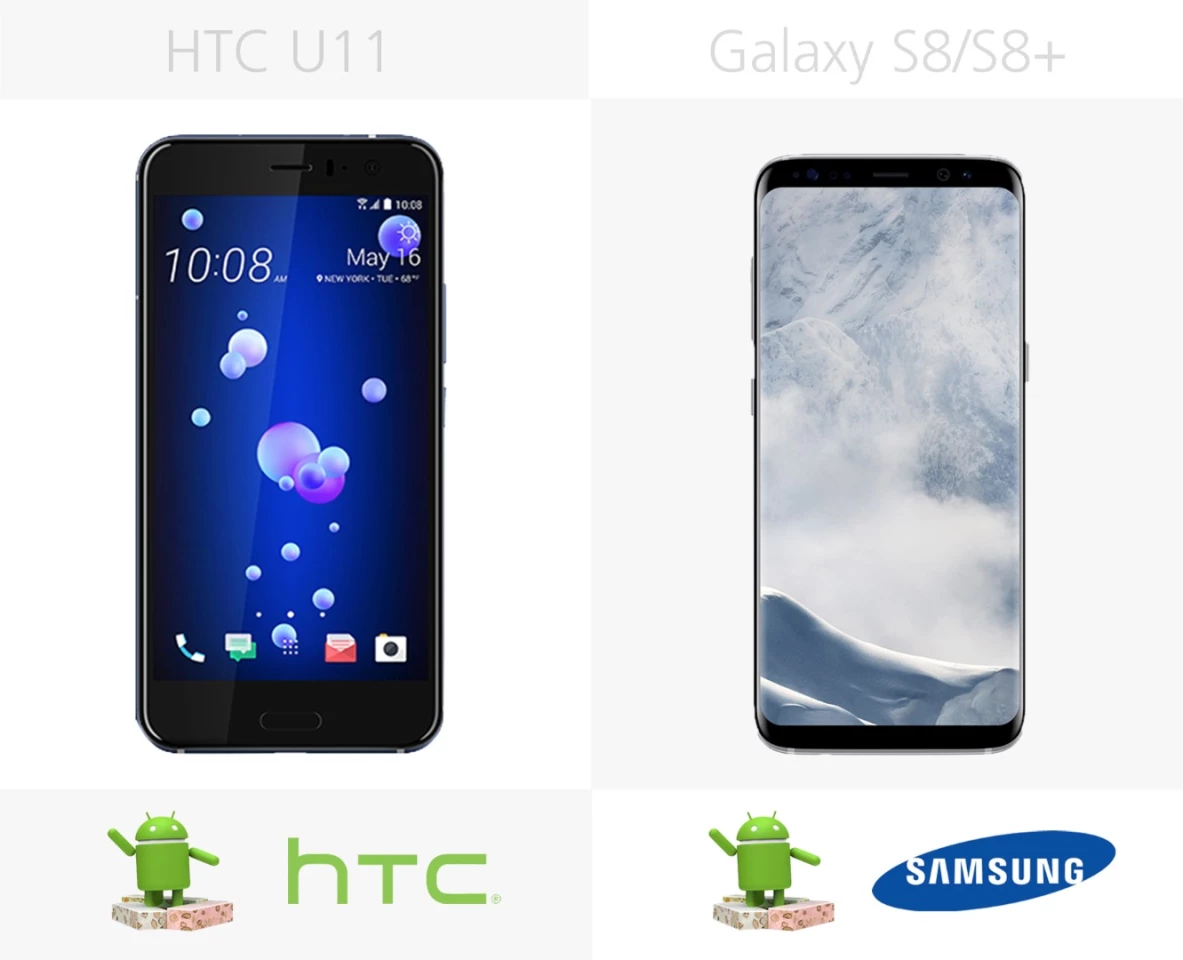
These phones run Android Nougat with the manufacturer's UI skinned over it.
Release

The HTC U11 is available for pre-order now and starts shipping next month. The latest premium flagships from Samsung were released in April.
Starting price (full retail)
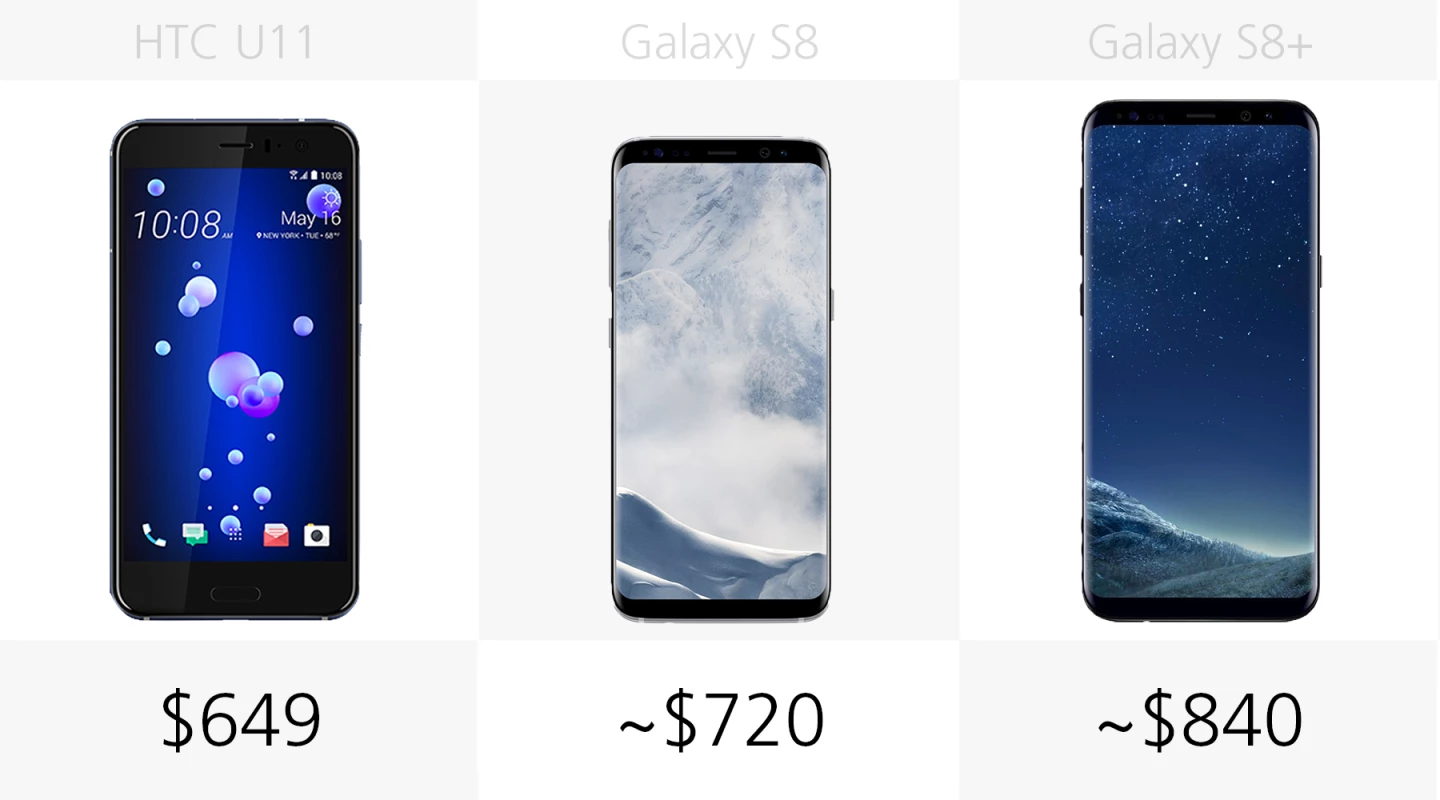
Pricing for the Samsung phones varies depending on carrier and payment plan, but count on paying more than you would for the HTC U11, which has the same entry-level price point as the iPhone 7 and Google Pixel.
Since both phones have similarly capable internals, the better choice depends on your priorities. If you listen to a lot of Hi-Fi audio – or you don't want to worry about breaking the rounded display on the S8 series – the HTC U11 could be an interesting option. On the other hand, the S8 and S8+ have a wide array of bells and whistles and good looks to match.
For a more in-depth look, check out our review for the Samsung Galaxy S8+. Full reviews for the Galaxy S8 and HTC U11 are coming soon.








































